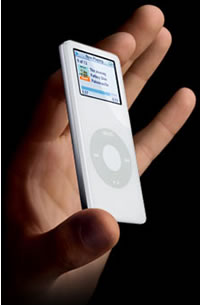 iTunes 5.0
iTunes 5.0
The iTunes software for PC and Mac has now reached v5, it’s available for immediate download from Apple’s site (and via software update for Mac users).
It features a “refined” interface with a new “search bar” making it easier for users to find what they’re looking for, playlists can be organised into folders, Smart Shuffle allows users change the randomness of their shuffled songs.
Windows users also get the added benefit of being able to sync contacts and calendars from Outlook (Mac users have had this ability through iLife for a long time).
iTunes software unsuprisingly integrates seemlessly with the iTunes music store which (in the UK) accounts for at least 80% of all downloaded music. There’s now over 1.7 million songs available, 15,000 podcasts and 10,000 audio books.
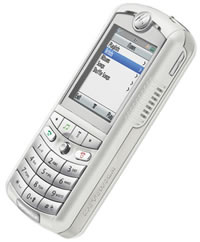 Motorola ROKR
Motorola ROKR
The Motorola ROKR (pronouced rocker) is a quad band GSM phone with iTunes built-in. It can hold 100 songs and connects to a PC (or Mac) via a USB connection. Apart from the iTunes software (which can bedirectly accessed from a button on the front of the phone) it’s a normal Motorola phone. You either like them, or you don’t. It’s still encumbered with Motorola’s quirky menu system.
If you’re listening to iTunes and the phone rings etc, it will pause the song playing and you can return to it when you’ve finished the call.
The phone does have some good features with passable stereo speakers and pretty good playback through headphones. Battery life is meant to be good too, though exact figures were not quoted.
It’s available in the US now exclusively through Cingular.
iPod nano
The nano is the new iPod killer. It’s tiny, but holds up to 4GB (1000 songs, though there’s a 500 song/2GB version available too). It’s got a colour screen and a click-wheel. It comes with a USB 2.0 cable, earbud phones and a CD with iTunes, etc.
The colour screen gives it away, it’s an iPod Photo shrunk to miniscule dimensions, bigger than a Shuffle, but smaller than a mini – and thin (it hides behind a number 2 pencil). It features a standard 30pin dockconnector port, so can be used with most (if not all) mini or standard accessories. Apple have put in a couple extra bits of software like world clocks (you set your normal country, but can select as many otherclocks relating to a country as you wish, each clock shows whether it’s day or night), there’s also a screen lock – to stop others messing with your nano. It can also hold 25,000 photos (when synced through iTunes).
Apple have also released some specific nano accessories like tubes (sleeves in various colour, 5 in a pack), lanyard headphones, armbands and a dock. These should be available within 30 days.
Apple may have been losing to the competition in the lower end of the market especially in the solid state arena, however the nano changes all that (it’s got 4GB of solid-state memory in it, not a hard disc like the iPod Mini) and it’s going to knock the competion for six, it’s got all the “Designed in California” (of course by a Brit, but they keep quite about that) sex appeal and the packaging is superb. It’s smaller than almost everything out there. You’re going to want one for Xmas … actually, on reflection, you’re going to want one of these straight away.
Pricing for the nano is $249 for the 4GB (+ local taxes) or in the UK, £179 inc VAT, in Europe Eu 239. The 2GB model is $199, or GBP 139 inc VAT in the UK and is available now.
The best thing about it though, you can get it in white or black.
Apple iPod Nano
Motorola ROKR
Apple iTunes 5
 Promptly filed under “Gimme! Gimme! Gimme!” at first peek, Toshiba are debuting a portable LED pocket projector at the Internationale Funkaustellung (IFA) trade show 2005 in Berlin.
Promptly filed under “Gimme! Gimme! Gimme!” at first peek, Toshiba are debuting a portable LED pocket projector at the Internationale Funkaustellung (IFA) trade show 2005 in Berlin. Inside there’s a panel fitted with different coloured LEDs which serve both as the light source and the means to determine the colour of the projected images.
Inside there’s a panel fitted with different coloured LEDs which serve both as the light source and the means to determine the colour of the projected images.  Siemens have announced their new Gigaset SL75 WLAN Voice-over-IP (VoIP) cordless telephone for the home.
Siemens have announced their new Gigaset SL75 WLAN Voice-over-IP (VoIP) cordless telephone for the home. Decked out in (ahem) “the season’s high fashion colour night grey”, the Gigaset SL75 WLAN sports a colour display (128×128 pixels, 4k/65k colors) and comes with a small docking station.
Decked out in (ahem) “the season’s high fashion colour night grey”, the Gigaset SL75 WLAN sports a colour display (128×128 pixels, 4k/65k colors) and comes with a small docking station. Only 25% of US business travellers are using Wi-Fi hotspots in airports and on planes, despite the growing availability of high-speed, wireless connections.
Only 25% of US business travellers are using Wi-Fi hotspots in airports and on planes, despite the growing availability of high-speed, wireless connections. Those surveyed also said that they were more interested in increased onboard personal space, bigger baggage allowances and better entertainment than blasting out emails mid-flight.
Those surveyed also said that they were more interested in increased onboard personal space, bigger baggage allowances and better entertainment than blasting out emails mid-flight.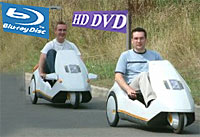 With Sony and Toshiba still enjoying a schoolyard scrap over which of their rival formats should become the standard format for next-generation DVDs, Samsung have announced a nifty compromise that plays both formats.
With Sony and Toshiba still enjoying a schoolyard scrap over which of their rival formats should become the standard format for next-generation DVDs, Samsung have announced a nifty compromise that plays both formats.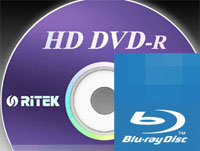 Although both Blu-Ray and HD DVD use groovy blue laser light to dramatically increase the storage capacity of a DVD-sized optical disc, they work in completely different ways.
Although both Blu-Ray and HD DVD use groovy blue laser light to dramatically increase the storage capacity of a DVD-sized optical disc, they work in completely different ways. Samsung have unveiled their sleek, credit-card sized Miniket VP-MS15 digital camera at the Berlin IFA show.
Samsung have unveiled their sleek, credit-card sized Miniket VP-MS15 digital camera at the Berlin IFA show.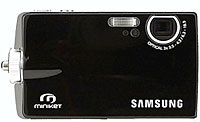 Connecting the Miniket via USB 2.0 also lets it be used as a Webcam or a ‘portable hard drive’.
Connecting the Miniket via USB 2.0 also lets it be used as a Webcam or a ‘portable hard drive’. Samsung have also released two identical-looking smaller brothers to the MS15; the VP-MS11, with 128MB of onboard memory. and the VP-MS10 with 64MB.
Samsung have also released two identical-looking smaller brothers to the MS15; the VP-MS11, with 128MB of onboard memory. and the VP-MS10 with 64MB.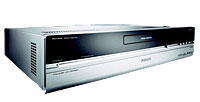 Philips has announced the Showline MCP 9350i, a media PC powered by Microsoft’s Windows XP Media Center Edition 2005 platform.
Philips has announced the Showline MCP 9350i, a media PC powered by Microsoft’s Windows XP Media Center Edition 2005 platform. There are two integrated tuners onboard letting sofa-reclining types watch one channel while recording another on the 250 GB hard drive or to CD or DVD.
There are two integrated tuners onboard letting sofa-reclining types watch one channel while recording another on the 250 GB hard drive or to CD or DVD.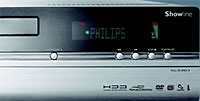 Philips’ Digital Natural Motion technology is employed to improve video quality and reduce stutter, with built in support for the UPnP protocol to allowing the unit to act as a media server for products in Philips’ Streamium range of media viewers.
Philips’ Digital Natural Motion technology is employed to improve video quality and reduce stutter, with built in support for the UPnP protocol to allowing the unit to act as a media server for products in Philips’ Streamium range of media viewers. 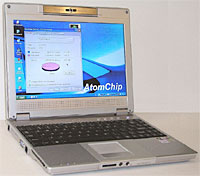 UPDATE – Thanks for the number of people who have written to us about this one, lead by Matt Lacey.
UPDATE – Thanks for the number of people who have written to us about this one, lead by Matt Lacey.  The 6.8GHz behemoth is powered by AtomChip’s Quantum II processor (or four 1.7GHz Intel Pentium M processors) with a terabyte of Quantum-Optical non-volatile RAM (NvIOpSRAM-SODIMM 200-pin) onboard.
The 6.8GHz behemoth is powered by AtomChip’s Quantum II processor (or four 1.7GHz Intel Pentium M processors) with a terabyte of Quantum-Optical non-volatile RAM (NvIOpSRAM-SODIMM 200-pin) onboard.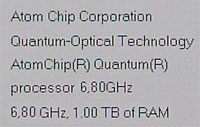 Despite the nation-threatening amount of power on hand, Atom Chip are claiming an impressive battery life of approximately 8 hours for the AtomChip II processor and 3 hours for the 4 x Intel Pentium M processor version.
Despite the nation-threatening amount of power on hand, Atom Chip are claiming an impressive battery life of approximately 8 hours for the AtomChip II processor and 3 hours for the 4 x Intel Pentium M processor version. Skype has slapped hands and manfully patted backs with German network operator E-Plus as the VoIP giant secures their first 3G partnership.
Skype has slapped hands and manfully patted backs with German network operator E-Plus as the VoIP giant secures their first 3G partnership. The busy-bee Skypesters are said to be already hatching up schemes with a number of major handset and headset manufacturers – including Motorola – to develop a broader range of offer Skype-ready devices
The busy-bee Skypesters are said to be already hatching up schemes with a number of major handset and headset manufacturers – including Motorola – to develop a broader range of offer Skype-ready devices Skype currently claims more than 2.8 million Skype users in Germany.
Skype currently claims more than 2.8 million Skype users in Germany.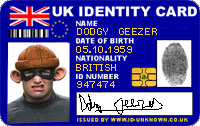 In a damning blow to the UK government’s love affair with identity cards, a British criminologist has warned that the new technology could actually increase, rather than solve, the problem of identity theft and fraud.
In a damning blow to the UK government’s love affair with identity cards, a British criminologist has warned that the new technology could actually increase, rather than solve, the problem of identity theft and fraud. “Studying the way that individuals disclose sensitive information would be far more valuable in preventing identity fraud than the evolution of technologically advanced but ultimately fallible measures to prevent misuse of personal information after it has been obtained,” she added.
“Studying the way that individuals disclose sensitive information would be far more valuable in preventing identity fraud than the evolution of technologically advanced but ultimately fallible measures to prevent misuse of personal information after it has been obtained,” she added.